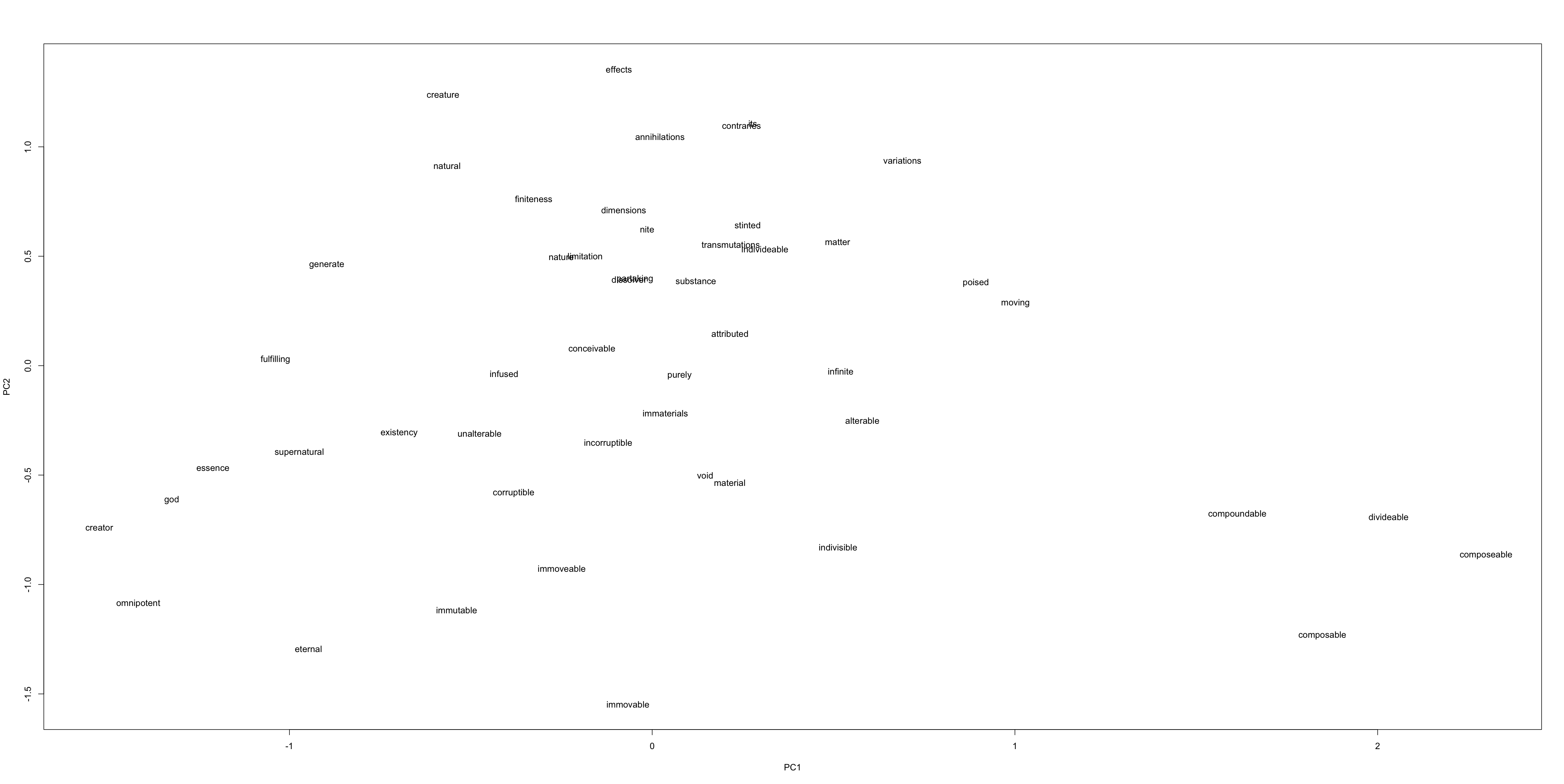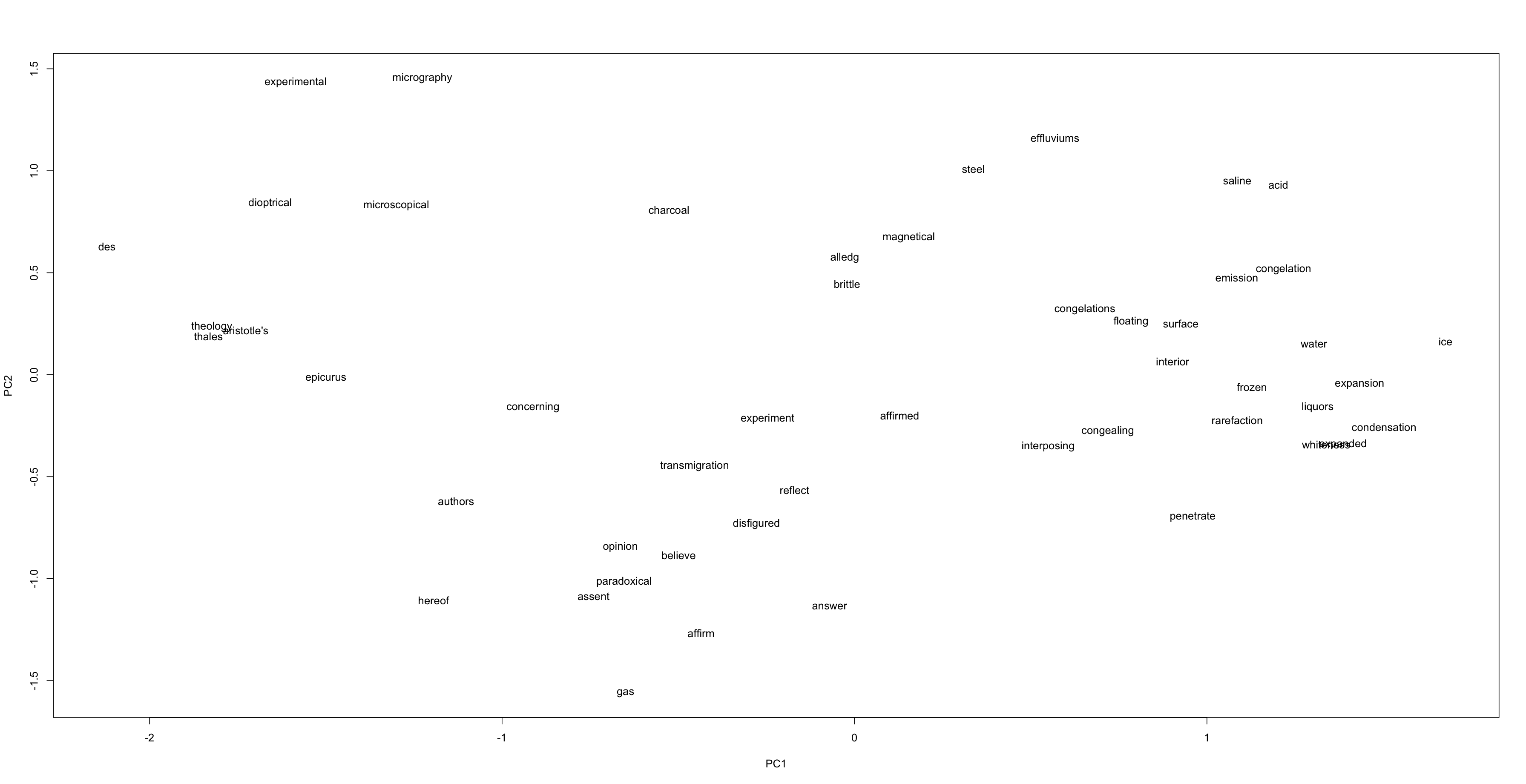Analyzing Scientific Discourse in the Works of Margaret Cavendish and Her Contemporaries
By Mel Williams, English Ph.D. Student
Overview
Currently, the Women Writers Online collection contains 32 texts by Margaret Cavendish, spanning philosophy, poetry, plays, and scientific reflection, making her the most extensively represented early modern woman writer in the collection. Cavendish distinguishes herself as an author through her diverse genres and her insightful and often critical engagement with contemporary scientific and philosophical discourses.
In 1667, she became the first woman invited to a meeting of the Royal Society, one of the world’s most influential scientific institutions. The invitation held considerable significance, yet it was predominantly symbolic, as women were not granted full membership until 1945, when Kathleen Lonsdale and Marjory Stephenson became the first female fellows (Royal Society). Her male peers frequently disregarded her work, labeling her “Mad Madge,” yet her writings demonstrate a profound and enduring engagement with themes of nature, experimentation, and knowledge creation, positioning her alongside other prominent figures of the era such as Locke, Boyle, Spinoza, Descartes, Berkeley, Hume, and Leibniz.
This essay grows out of “New Digital Methods for Understanding the Impacts of Early Women Writers on the Development of Science and Philosophy,” a collaborative project between the Women Writers Project and the PolyGraphs Project. The project team includes Mel Williams, Colleen Nugent MacLean, Peter West, Brian Ball, Sarah Connell, and Julia Flanders. Bringing together expertise in philosophical recovery work, feminist digital humanities, and computational text and network analysis, the project applies digital methods to reassess the intellectual contributions of early women writers, especially Margaret Cavendish, to the intertwined histories of science and philosophy. Through the integration of TEI/XML encoding, topic modeling, word embeddings, and network analysis, we aim to demonstrate how women’s ideas circulated within early modern intellectual networks and to reveal engagement patterns often overlooked by conventional scholarship.
For this essay, I will focus on three primary areas of inquiry:
- How did women writers like Margaret Cavendish contribute to early modern scientific and philosophical discourse? The project examines how early women writers engaged with the philosophical and scientific debates of their time. Cavendish was not a passive observer; she actively critiqued and contributed to intellectual discourse.
- What can digital text analysis reveal about her use of scientific language? By applying TEI/XML markup, topic modeling, and word embeddings, the project identifies and tracks conceptual patterns and rhetorical strategies across her work.
- How did early modern scientific and philosophical discourse by women circulate? The project maps how this work circulated and interacted with larger intellectual networks, particularly those related to institutions such as the Royal Society.
Cavendish’s status as a publicly recognized woman philosopher, dramatist, novelist, and scientist was remarkable for her era. By re-evaluating her work using digital humanities techniques such as text encoding, keyword analysis, word embedding modeling, and network modeling, we can illuminate her contributions to early modern science and philosophy and reexamine the knowledge networks from which she was marginalized. This essay examines Cavendish’s intellectual influence from two main perspectives: linguistic and conceptual frameworks, as well as intellectual networks.
Linguistic and Conceptual Frameworks
One of the lenses through which this project approaches Cavendish’s work is the language she uses to engage with scientific and philosophical discourse. By employing the encoding methods of the Women Writers Project, the team was able to facilitate a scalable analysis of her work by modeling her engagement with scientific vocabulary.
Keyword analysis facilitates the identification of recurring themes and concepts within early modern scientific discourse. By analyzing clusters around terms such as “experiment,” “nature,” and “observation,” we can differentiate and compare their applications in Cavendish’s writings from that of other contemporary scientific authors. Keywords were chosen based on their frequency in the corpus and their relevance to the scientific movements of the period.


After identifying these keywords, we applied Word2Vec modeling to conceptualize proximities and divergences across different corpora. For this project, we trained separate models for Cavendish and Royal Society authors (such as Boyle and Hooke). Word2Vec, developed by Mikolov et al. (2013), uses machine learning to organize words into a vector space, bringing words that are used in comparable contexts closer together. This process enables the tracking of conceptual proximities, the comparison of Cavendish’s scientific language with that of her male contemporaries, and a visualization of how words and meaning shift over time.
After running the Word2Vec models and plotting the 50 closest words to “nature” with principal component analysis, we discover that in Cavendish’s corpus, nature clusters closely with the words finiteness, natural, dimension, and transmutation, implying that Cavendish’s understanding of nature is semantically closer to vocabulary associated with process and change. Interestingly, divine terminology such as god, essence, omnipotent, and eternal appear in the visualization, denoting a relative proximity and therefore, shared contextual associations. In Figure 1, for example, theological terms such as eternal, omnipotent, god, and creator, appear in the lower-left region of the visualization, while terms related to physical processes such as substance, dimension, matter, and dividable occupy the center and right area of the vector space. This clustering could indicate notions that Cavendish perceived as interconnected, providing insight into how she organized categories in her definition of natural philosophy. In the Royal Society-trained model, nature is more closely associated with principles, particular, natural, and corporeal, indicating a more mechanistic perspective (see visualizations below).



An examination of the keyword “experiment” reveals a significant disparity between outcomes in the Cavendish model and the Royal Society-trained model. In the former context, it is associated with affirmed, reflect, concerning, and transmigration, whereas in the Royal Society model, it is linked with words such as recited, foregoing, confirmations, mention’d, and trial, revealing an approach grounded in verification and replication of scientific experiments. This is of interest as it connects experimentation to both the technical and reflective aspects of inquiry, suggesting that Cavendish’s understanding of “experiment” is more about intellectual play and imaginative capacities rather than the more systematic procedures of her male contemporaries. Similarly, “observation” is paired with capacity, judgement, and reason, which suggests a personal stake in observing, as opposed to the Royal Society text, which links it to intimated, alleged’d, conjecture, and experiments.
Comparing the utilization of these keywords in both corpora, particularly those concerning scientific and philosophical methods, may help support more traditional humanistic readings of Cavendish’s understanding of natural philosophy and offer launch points for new avenues of inquiry, especially in relation to Cavendish’s novel approach as compared with other philosophers of her time.
Intellectual Networks
In collaboration with the PolyGraphs Project, directed by Brian Ball, we are utilizing computational tools to simulate epistemic interactions and analyze Cavendish’s role within early modern intellectual discourse. We employ network modeling to analyze Cavendish’s established connections with other thinkers and institutions, aiming to evaluate how these patterns may vary across different scenarios.
Although our findings in this domain are still in the early stages, this research will help illustrate the extent and boundaries of her intellectual influence, such as whether her concepts were disseminated through direct interaction, indirect citation, or interactions within established scientific and philosophical frameworks. Given that fewer than 30% of researchers globally are women (UNESCO Institute for Statistics), examining the engagement or exclusion of early women writers, such as Cavendish, from intellectual networks will enhance our understanding of how structural barriers were established and perpetuated. By examining their historical presence, we can also contest the idea that women in these fields are exceptions rather than the norm.
Conclusion
This project employs digital humanities methodologies to recontextualize Margaret Cavendish’s contributions to the evolution of early modern science and philosophy. By analyzing her language and conceptual frameworks, we can observe her metaphysical perspective on concepts such as “nature” and how it contrasts with the mechanical models proposed by her male contemporaries. Our preliminary network analysis suggests that structural barriers influenced the marginalization of her voice in early modern intellectual life, despite her extensive writing career and engagement with science and philosophy in her work.
Future research will focus on enhancing word embedding models, performing typicality analysis, broadening network simulations, and examining the evolution of Cavendish’s conceptual vocabulary across different genres. This analysis seeks to restore Cavendish’s position within the philosophical and scientific intellectual framework.
Works Cited
Pioneering Scientists Who Were First Female Fellows of the Royal Society Commemorated in New Documentaries Presented by Dame Maggie Aderin-Pocock.” The Royal Society, 24 Mar. 2025, https://royalsociety.org/news/2025/03/marjory-stephenson-kathleen-lonsdale-anniversary/
“Women in Science.” UNESCO Institute for Statistics, https://uis.unesco.org/en/topic/women-science
Tweet